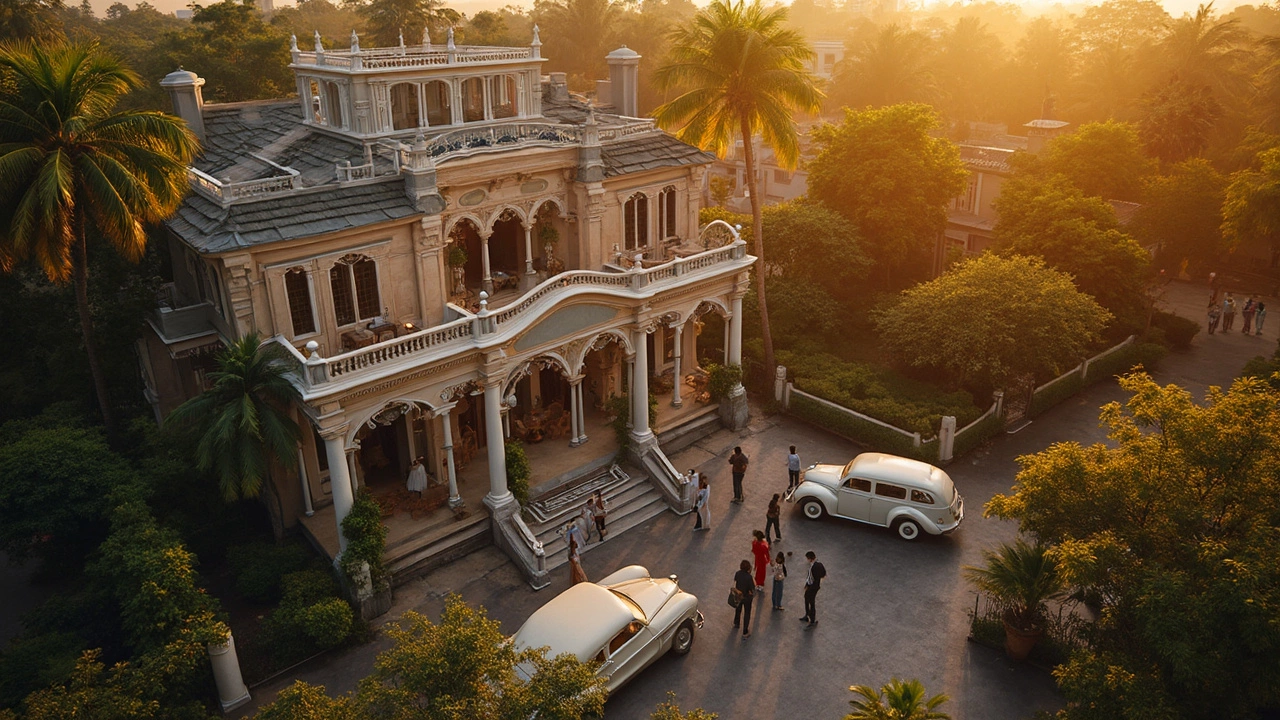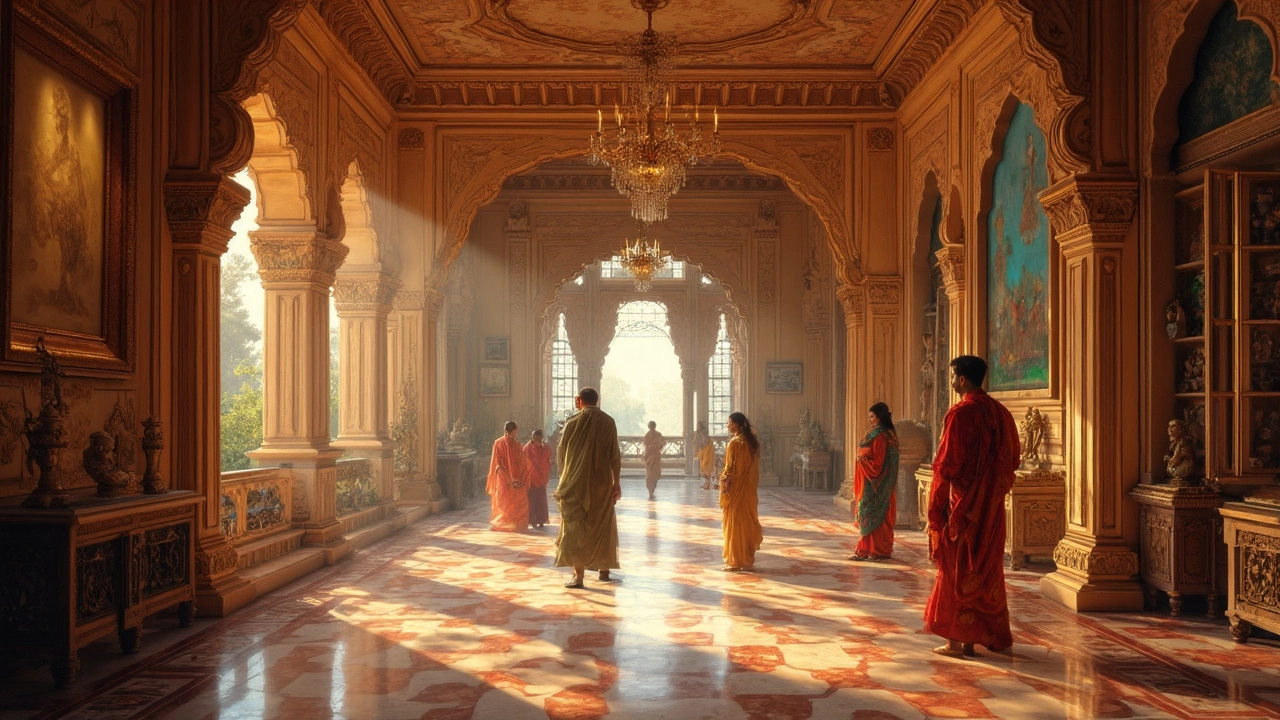SEARCH
Where Do India's Wealthy Live? Top Cities with Heritage Flair


Wondering where India’s richest folks actually call home? Most think of glittery Mumbai high-rises or old-school Delhi palaces, but the story is a bit richer (pun intended). The ultra-wealthy don’t just chase city life—they often pick places bursting with history and memorable architecture.
Some neighborhoods are famous for their heritage bungalows, grand old homes, or even palaces-turned-residences. Imagine living where maharajas once did, or in districts packed with colonial charm. It’s not just about square footage or fancy marble; for many of India’s rich, location means history, prestige, and legacy.
Looking to spot these plush quarters for yourself? You’ll want a list—not just the flashy, but the cultural too. Think South Mumbai’s Art Deco coast, Delhi’s greenest enclaves, and a few surprising options that combine luxury with a serious dose of India’s unique heritage.
- India’s Wealthy: Who and Where?
- Luxury Living Meets Heritage
- Mumbai: Financial Power and Old Money Estates
- Delhi: History, Heritage, and Mega Mansions
- Hidden Gems: Lesser-Known Heritage Hubs
India’s Wealthy: Who and Where?
When people talk about India's wealthy, they usually picture Bollywood stars, tech moguls, and old royal families. But the actual number of ultra-rich is bigger than you'd guess. According to the Hurun India Rich List 2024, the country is now home to over 1,350 individuals who are considered billionaires in rupees, and at least 119 who are dollar billionaires. Mumbai, unsurprisingly, is home base to the largest chunk, but Delhi and Bengaluru aren’t far behind.
Here's a quick look at where these richest cities stack up:
| City | No. of Dollar Billionaires (2024) | Key Features |
|---|---|---|
| Mumbai | 66 | Business capital, Heritage precincts |
| Delhi | 39 | Political hub, Old-wealth enclaves |
| Bengaluru | 23 | Tech titans, Colonial bungalows |
So, where do they actually live? Sure, the Ambanis have their skyscraper mansion in Mumbai, but the Tata, Birla, and Godrej families still maintain legacy homes in historic parts of town. In Delhi, the likes of the Jindals and DLF's K.P. Singh are found in Lutyens’ Delhi—a zone built by the British and now among the world’s most expensive real estate spots.
It’s not just modern money. Many of these Indian billionaires are still hanging on to family mansions near famous heritage sites. Think palatial houses in Jor Bagh or old colonial lanes in central Bengaluru. Even smaller places like Hyderabad and Jaipur attract newer millionaires who want a touch of history in their backyard. If you spot a massive house facing a preserved fort or inside a leafy, protected quarter, odds are it belongs to someone on the rich list.
Interestingly, old money isn’t just sitting tight—many smart families invest in heritage restoration, turning former palaces or ancestral homes into luxury residences that still keep their original vibe. So if you’re mapping the address book of India’s wealthy, you’ll have to peek at both the buzzing business districts and the quieter, storied lanes steeped in history.
Luxury Living Meets Heritage
When it comes to India's wealthy, just having a big modern house isn’t always enough. For many, it’s about a life that feels connected to tradition. That's why some of the most pricey and exclusive real estate in the country sits right in the heart of heritage sites and old districts.
Let’s talk about Mumbai’s Malabar Hill and Delhi’s Lutyens’ Bungalow Zone. Malabar Hill isn’t just home to names on the Forbes rich list. You’ll see sprawling family mansions that date back nearly a century, sitting next to skyscrapers. These aren’t just houses—they’re family legacies. In Lutyens’ Delhi, some bungalows have sold for over Rs 1,000 crore each. Owning one isn’t about status alone—it’s about holding onto a piece of Indian history.
It’s not only about cities, either. Some families still live in massive havelis or palaces in places like Jaipur and Udaipur, passed on for generations. These buildings cost a lot to upkeep but offer a lifestyle—and an address—you simply can’t get elsewhere.
If you look at where richest cities and well-off families invest, older neighborhoods with protected heritage often top the list. That’s because these areas hold their value and sometimes skyrocket, thanks to strict limits on reconstruction and a unique cultural vibe. For buyers, it's like getting a piece of art instead of just another condo.
| City/Area | Average Price (per sq. ft.) | Known For |
|---|---|---|
| Malabar Hill, Mumbai | ₹95,000 | Heritage mansions, private gardens |
| Lutyens’ Bungalow Zone, Delhi | ₹6 - 18 lakh | British-era bungalows, tree-lined roads |
| Jaipur City Palace Area | ₹25,000 | Royal havelis, historic charm |
Pro tip for house hunters: The best places combine privacy, location, and that intangible heritage feel. These places may need more upkeep but the payoff is massive, both as an investment and as a slice of culture most people will never experience in their daily lives.

Mumbai: Financial Power and Old Money Estates
There’s no way you can talk about where India's wealthy live without putting Mumbai at the top. This city is the undisputed capital of big money and glitzy lifestyles. But it’s not just the flashy high-rises making noise—the real story is in its neighborhoods packed with heritage value and old-money charm.
South Mumbai, or SoBo, is home turf for the country’s most powerful business families. Walk down Marine Drive, and you’ll see stunning Art Deco buildings that feel lost in time. Malabar Hill, Cuffe Parade, and Altamount Road are packed with bungalows and mansions that have belonged to the same families for generations. Take Altamount Road for example—it’s nicknamed ‘Billionaires' Row’ for a reason. Mukesh Ambani’s Antilia, arguably the most expensive private home in the world, sits right here with its 27 levels standing out on the skyline.
But Mumbai’s old wealth goes deeper. The city hosts clubs like the Willingdon and Bombay Gymkhana, where family names mean more than your bank balance. Buildings like the Nepean Sea Road heritage mansions aren’t just big—they’re a badge of legacy, owned often by families whose fortunes were made during the cotton boom or British Raj. Many properties here are technically heritage sites, protected by law from drastic makeovers, keeping that old Bombay vibe alive.
If you’re eyeing Mumbai’s luxury homes with heritage appeal, expect to pay a premium. Even a small flat in South Mumbai can cost 3-5 times what you’d pay in most other Indian metros. Here’s a quick look at property rates for some iconic areas:
| Location | Avg Price per sq ft (2025) |
|---|---|
| Altamount Road | ₹1.5 lakh |
| Malabar Hill | ₹1.3 lakh |
| Cuffe Parade | ₹95,000 |
| Marine Drive | ₹90,000 |
Tip: Homes with protected heritage status usually mean hoops to jump through if you want to remodel or expand. But for many families, the prestige is worth it. And if you’re interested in heritage sites, visiting South Mumbai is like taking a walk through a giant, living museum of old and new riches blending together.
Delhi: History, Heritage, and Mega Mansions
Delhi is like a magnet for India's wealthy because it has a real mix of status, history, and creature comforts. New Delhi’s Lutyens’ Bungalow Zone (usually called LBZ) is probably the most exclusive address in the country. Think ambassadors, business tycoons, and politicians—almost all big names want a piece of LBZ. The price tag isn’t small: some properties have sold for around ₹800 crore (yep, that's about $100 million).
What makes the LBZ so special? It isn’t just the money. You get leafy streets, gigantic lawns, and colonial-era mansions that were built in the early 20th century for British officials. These houses come with strict rules—renovating or rebuilding means jumping through serious heritage hoops, so owners tend to keep the original look live and well.
Other areas where India’s rich pick out their homes include Golf Links, Jor Bagh, and Sunder Nagar. These are old neighborhoods, just a quick drive from India Gate or Rashtrapati Bhawan. They’re not the biggest, but the mix of privacy, heritage charm, and central location is unbeatable.
The South Delhi belt is also a favorite, especially for new-age millionaires and those who want top-notch security and modern amenities. Think Panchsheel Park, Greater Kailash, and Vasant Vihar. You’ll get more modern villas, but still close to posh clubs, embassies, and top schools.
- LBZ: Colonial bungalows, strict heritage rules, highest land values in India
- Golf Links/Jor Bagh: Central, peaceful, and deep-rooted old-money vibes
- South Delhi: Mix of heritage and modern mansions, plus swanky lifestyle perks
Here’s a ballpark look at property prices in these areas:
| Neighborhood | Typical Price (per sq ft) |
|---|---|
| Lutyens' Bungalow Zone | ₹1.5–3 lakh |
| Golf Links / Jor Bagh | ₹1–1.8 lakh |
| South Delhi (GK, Vasant Vihar) | ₹40,000–₹90,000 |
A quick tip: Delhi’s heritage homes come with prestige, but you’re often buying a slice of history, not just a house. Expect long waits and paperwork if you’re eyeing an old bungalow. And if you’re after a sneak peek? Some embassies and clubs in LBZ offer events open to non-members—that’s your chance to see a bit of this world up close.

Hidden Gems: Lesser-Known Heritage Hubs
Everybody’s heard about Mumbai and Delhi when you talk about India's wealthy, but the country’s heritage scene is packed with under-the-radar spots where old money and new millionaires live it up. These aren’t places that buzz with paparazzi or Bollywood sightings. Instead, these towns blend charm, history, and privacy—exactly what the ultra-rich want.
Take Chettinad in Tamil Nadu. Want homes full of antique tiles, teak pillars, and Italian marble? The Chettiar community isn’t as flashy as Mumbai’s billionaires, but their mansions are jaw-dropping. Some homes, dating back over a century, boast courtyards bigger than some restaurants. In a 2023 interview, architect Pradeep Sachdeva said,
“Chettinad mansions aren’t just houses; they’re living pieces of history, passed from one proud generation to the next.”
Then there’s Jodhpur’s Gulab Sagar and Mandore Road areas—old havelis, some updated with swimming pools and solar panels, but always keeping that blue city vibe. Wealthy families from Rajasthan’s business circles often prefer these quieter corners instead of tourist-packed Udaipur.
Let’s not forget Lucknow. A few streets in Hazratganj and Gomti Nagar are filled with Lucknow’s old Nawabi wealth mixed with high-end apartments. Living here means access to legendary food, Urdu poetry circles, and weekend music on the lawns—pretty unique compared to the rest of the country.
If you’re researching smaller heritage towns attracting luxury homes and richest cities fame:
- Alleppey (Kerala): Old spice-trade mansions and backwater villas
- Pondicherry: French heritage homes with restored courtyards
- Shimla & Darjeeling: Colonial summer houses snapped up by Indian billionaires seeking cool weather escapes
Here’s a snapshot of average heritage property rates in these "hidden gem" cities as of early 2025:
| City | Heritage Home Price (INR/sq. ft.) | Typical Buyer |
|---|---|---|
| Chettinad | ₹3,000–₹6,000 | Traditional business families |
| Jodhpur | ₹9,000–₹15,000 | New money, old aristocracy |
| Pondicherry | ₹10,000–₹18,000 | Artists, entrepreneurs |
The real tip here? Places with living heritage offer a blend of investment, privacy, and cultural roots. While the spotlight stays on the big metro cities, smart buyers hunt for homes where every wall has a story—and every neighbor is part of an exclusive club that most people don’t even know exists.